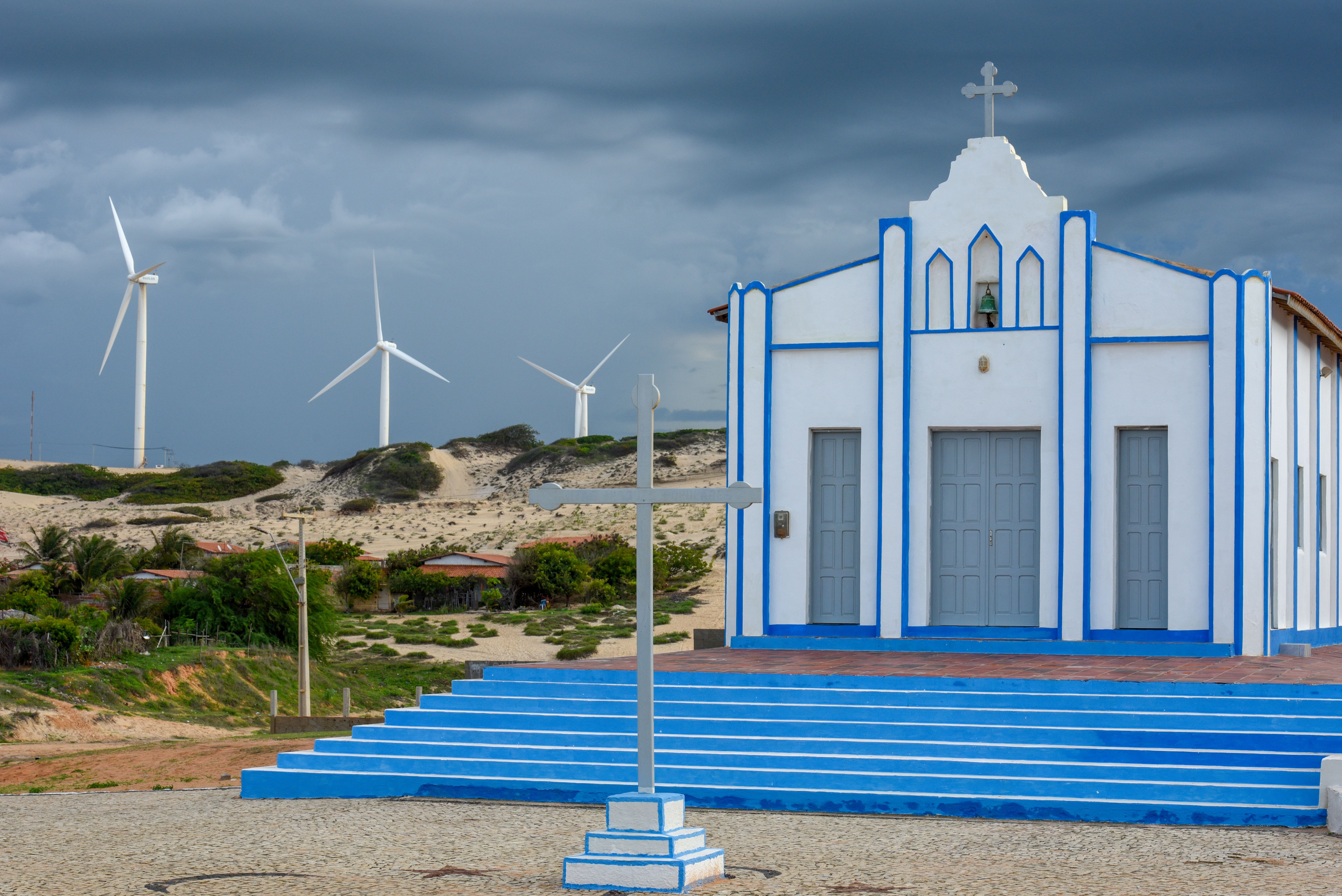What it is
Use renewable energy to produce electricity instead of natural gas, and replace appliances and machinery fueled with natural gas with electric ones.

Where can it be implemented
Everywhere people use natural gas.
How it works
In South and Central America, 20.6% of electricity is generated using natural gas, according to data from the International Energy Agency. Replacing natural gas generation with electricity generated with renewable energy can drive down these emissions and clean up the grid. Key technologies include solar panels, wind farms, geothermal and hydro power. At the same time, natural gas-fueled heating, stoves, and machinery must be replaced with electric versions powered by renewable energy.
Who’s doing it
Renewable energy is growing rapidly across South America. Several countries, including Chile, Colombia, and Peru have developed legislation and strategies to support renewable energy development that can replace energy generation from natural gas. For example, Chile—a frontrunner in renewable energy development in South America—is guided by its 2050 National Energy Policy. It has also attracted significant foreign investment to its renewable energy sector through carbon taxes and comprehensive legislation.

Policy considerations
Laws, policies, and regulations
National energy laws and policies must include measures to shift away from natural gas for electricity production and heating. Setting renewable energy targets and backing them with strategies and action plans can drive a shift towards renewables. These actions should also be accompanied by data gathering to track progress.
Policymakers might also create programs that encourage businesses to set and monitor their own renewable energy targets, as well as adopt policies that favor investment in the renewable energy sector by local businesses, as well as those in other countries. National governments can also support renewable energy research, development, and demonstration projects.
For example, Brazil and Chile are part of Mission Innovation, a global initiative to catalyze action and investment in research, development and demonstration to develop affordable, attractive, and accessible clean energy technologies.
At the same time, elected officials and policymakers should look to eliminate all fossil fuel subsidies and other policies that keep the price of natural gas artificially low. Eliminating these subsidies make it easier for renewables to compete with fossil fuels. Taking a step further, governments can direct subsidies towards renewable energy and, as recommended by the International Energy Agency, halt all new investments in gas fields.
Municipalities, or higher levels of government where appropriate, can ban natural gas connections in new buildings. Governments can also introduce emissions performance standards for buildings that push developers and building owners to shift towards renewable energy. Alternatively, governments can provide developers with incentives, such as the ability to build more floors, for creating buildings that are more energy efficient and rely on renewable energy.
Replace fossil fuel revenue
Many South American countries rely on fossil fuels for substantial public revenues. To enable a transition, these countries must shift their policies and look to other sources of revenue. Some of this revenue can also be replaced with revenues earned from renewable energy. Promoting the growth of the renewable energy sector can also bolster the economy and create thousands of jobs and decentralized renewable energy developments can improve the resiliency of the energy system in the face of climate disasters.
Prompt energy efficiency and modernize the grid
Modernizing the grid prepares it for an infusion of renewable energy and ensures it is prepared to meet demand as energy systems electrify. At the same time, governments must take steps towards improving energy efficiency, including through retrofitting buildings, to minimize the amount of new renewable energy development required.
Shift utility business models
Governments can encourage natural gas utilities to pivot from selling a commodity (fuel) to selling a service (thermal comfort). Under the latter model, companies and utilities can earn revenues from insulating buildings, installing heat pumps, and so on. This strategy can help reduce opposition to electrification by natural gas companies and utilities.
Integrated Action
Replacing natural gas cannot happen in isolation. Policymakers must take a full view of the heating, cooling, and transport sectors to figure out the best way to transition away from natural gas and capitalize on interconnections between these sectors.
Equity
Replacing natural gas, as well as the policies necessary to make it happen, can have substantial equity implications. For example, removing natural gas subsidies can drive up the cost of energy for households reliant on natural gas. If an affordable renewable alternative is not available, communities, especially low-income ones, will struggle. The equity impact of actions related to replacing natural gas must be considered at the stage of policy development to ensure measures are in place to support households and businesses that may struggle with shifts in the price of energy. These measures may range from subsidies for renewable energy for low-income households to grants to support families and small businesses with installing solar energy systems.
Communication social, environmental, and environmental benefits
Replacing natural gas offers a host of benefits to communities beyond reducing methane emissions. Using natural gas creates indoor and outdoor air pollution, which contributes to respiratory and heart diseases, and damages lung tissue. Eliminating this pollution is beneficial for all, especially children and seniors.
Transitioning away from natural gas is also an opportunity to build an energy system that is more resilient to climate change. Decentralized renewable energy development, such as installing solar panels on roofs across a community, tends to be more resilient than centralized energy systems.
Finally, replacing natural gas requires investments in renewable energy that can create thousands of jobs as the green energy sector grows. Educating decision-makers and the public about the above benefits can play a critical role in driving change.